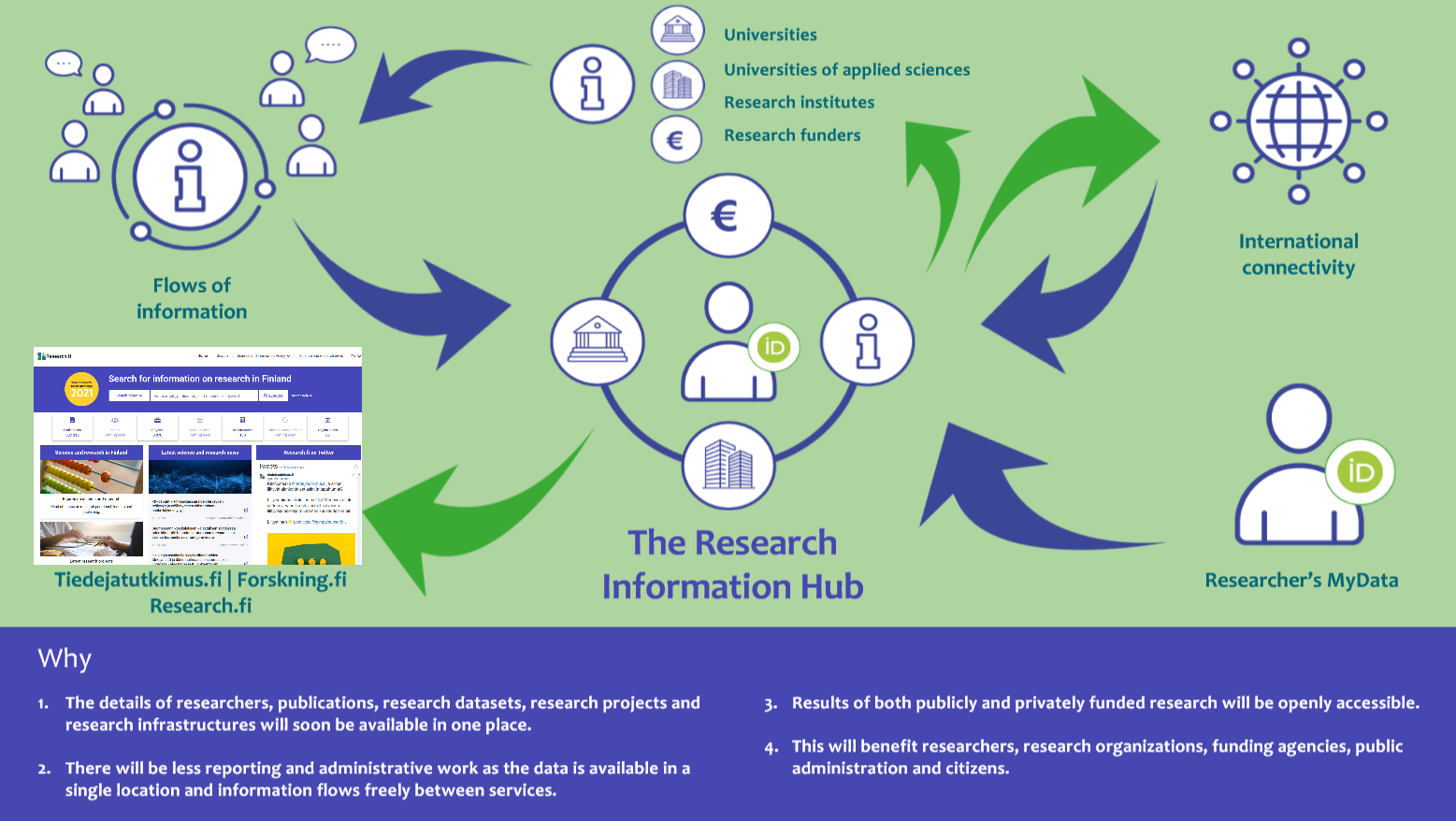Current situationAuthorities, research funders, higher education institutions, research facilities and other parties conducting research are constantly collecting enormous amounts of metadata on research being conducted in Finland. This metadata is collected in several different locations, such as:
- Universities and other research organisations
- Ministry of Education and Culture's data collection campaigns
- Research data archives
- Research funder registers
- Project registers
- Scientific publisher services
For the time being, information has been difficult to locate and use, and databases and information systems containing metadata are not linked with one another. Anyone needing data has to search in several different places, because there is no one cohesive access point for research being conducted in Finland where the information is organised in easily accessible and understandable entities.
Considerable resources are used in the collection of information. At the national level, the use of information has thus far primarily put an emphasis on its use as a criterion for the distribution of funds as well as in the evaluation, steering and statistics compilation of research.
Researchers use numerous online services, which also collect information on research. However, at the moment, researchers are still forced to enter the same information, for example, on their publications, in several different places, such as research data systems, publication archives, CV services, researcher funder systems and various impact services. In addition to this, when changing organisations, they may also have to re-enter their data in the systems of several different organisations.
